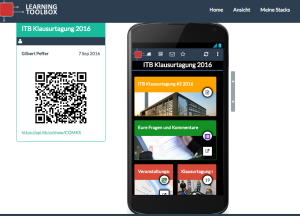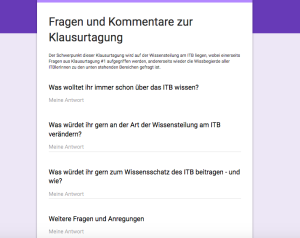In my latest posts I have been writing a series of blogs on my journey with ECER conferences and the VETNET network. These blogs serve as my contribution to the European Conference on Educational Research (ECER) 2016 when we will celebrate the 20th anniversary of the founding of VETNET – the European Vocational Education and Training Research Network. This year I have to stay outof ECER because of health issues. In the previousposts I have covered the earliest years from 1992 on, the founding phase until 2001, the stabilisation phase between 2003 and 2007 and the consolidation phase between 2007 and 2011. In this final post I will have a look at the latest phase up to present date.
ECER 2012 in Cadiz: The role of VET in overcoming the economic crisis
Whatever we might have been able to plan in advance for ECER 2012 in Cadiz, real life pushed genuine challenges to public discussion. The fact that the host country Spain was heavily hit by the economic crisis and youth unemployment gave us a clear clue, what to discuss in the conference. Therefore, in the VETNET Opening colloquium we raised the question on the role of VET in overcoming such a crisis. Fernando analysed recent developments in and current debates on Spanish VET system. He drew attention to potentials that had not been used (cooperation between VET and working life) and demands for changes that have not been thoroughly thought through (transfer of German model of dual system to Spain). Marg Malloch presented a picture of parallel developments and political pressures on privatisation of VET in Australia. Michael Gessler analysed, how the German dual system works regarding the transition from school to working life and examined, how a complex web of additional options and measures – the system of transition schemes – has emerged and stabilised as a self-sustaining system.
In addition to this opening event we had several contributions on the role of VET in supporting transitions and in supporting workplace learning. In particular the Dutch contributions on VET schools as organisers of/ partners in practice-based learning (Aimee Hoeve, Hester Smulders, Jeroen Onstenk) addressed these issues. I gave an overview on the development of the themes ‘workplace learning’, ‘cooperation between learning venues’ and ‘work process knowledge’ in European projects since 1995 to present date. Ludger Deitmer discussed the role of apprentice training as a basis for innovations in organisations (with reference to analyses using the QEK-tool).
For the VETNET community the Cadiz experience was a strong impulse for getting more intensively engaged with the crisis and paying attention to specific support measures (e.g. bilateral programs between Germany and Spain or Greece).
ECER 2013 in Istanbul: VET between academic drift and enhancement of work-related learning
Concerning ECER 2013 in Istanbul, the advent of the conference was characterised by massive protest movements and partly these demonstrations continued during ECER. However, these protests were not related to economic problems or youth unemployment. Thus, the Opening colloquium of VETNET focused on the position of VET in Turkey – between academic drift and lowly esteemed occupational work. The VETNET organisers discussed this theme with two Turkish professors – Oguz Baburoglu (as expert on the development of Turkish Higher Education institutions) and Özlem Ünlühisarcikli (as expert on Turkish VET development). We couldn’t draw clear conclusions but we learned a lot.
In the sessions our ITB project team presented the first contributions from our ongoing Learning Layers project – at a theoretical level revisiting the studies on ‘work process knowledge’ and ‘informal learning’, at empirical level discussions on the design ideas for mobile learning in construction sector and analyses on user stories (based on interview material). In another session our Dutch colleagues (Loek Nieuwenhuis, Aimee Hoeve, Ilya Zitter) presented a set of interactive innovation projects in which research teams were supporting practice-based learning in VET and (vocational) higher education. A specific symposium of our former ITB-colleagues from three universities discussed validation of informal and non-formal learning in Germany and at European level. Finally, Martin Mulder presented newest results of his project to map the European group picture of VET research in the light of articles in refereed journals.
For VETNET network this would have been normally the year to elect the Convenor and the board. However, since the change of Convenor(s) had already taken place in the previous year and since the colleagues were available for a new term, the board members were re-elected. However, as a new challenge we took note of the fact that the global umbrella organisation WERA (World Educational Research Association) had published a call for proposals for WERA International Research Networks (IRNs). We concluded that VETNET (with its international partners outside Europe) is in a good position to set up such a global network for the field of VET. Therefore, such a proposal was prepared shortly after the Istanbul conference and it was approved by WERA in the beginning of the year 2014.
ECER 2014 in Porto: Past, present and future of VET research
The ECER 2014 in Porto celebrated the 2oth anniversary of the founding of the EERA (European Educational Research Association) with the theme “Past, present and future of educational research”. In this spirit we agreed to discuss past, present and future challenges in VET research in the VETNET Opening colloquium in Porto. Marg Malloch chaired, whilst I presented reflections on the development of European research on learning in the context of work (past), Eduardo Figuiera discussed the current stand of Portuguese VET research (present) and Karen Evans outlined some challenges for (future) VET research.
In the sessions I was mainly engaged with the contributions of the Learning Layers project. Our main contribution was the symposium “Construction 2.0” in which we discussed the development of our accompanying research approach (in the context of participative design processes) and the matching of mobile learning with the development of vocational learning in intermediate training centres. Our second session was a joint workshop with the Dutch team from HAN University (Loek Nieuwenhuis and Aimee Hoeve) in which we compared two Dutch and two German cases as examples of interactive innovation research in the field of VET.
Concerning the VETNET network and the wider international community there were two clear highlights:
- In the VETNET General Assembly we launched the new online journal “International Journal for Research in Vocational Education and Training (IJRVET)” and published its first issue. After a lengthy pre-history the final phase of preparations led to a broad mobilisation of VETNET network and international partners as support network and the practical arrangements were agreed quickly and smoothly between ECER 2013 and 2014.
- On the last conference day the newly founded WERA IRN “Internationalisation of VET research (IRN-VET)” has its Forum session to present its action plan and to discuss some selected themes for future cooperation (International VET research review, Developments in governance of VET, Internationalisation in VET teacher education and doctoral studies). Via this Forum a wider range of network members became engaged in cooperation at global level.
Bremen Conference 2015 “Crossing boundaries in VET”
In this context it is worthwhile to mention shortly that the next major event of VETNET and IRN-VET took place already before the ECER 2015, since the ITB-hosted conference “Crossing boungaries in VET” was organised one week before ECER. With this pre-conference the networks provided a wider opportunity for European and international participants to debate and exchange views on themes that are presented very shortly in ordinary conferences. The keynote speakers were mainly VETNET board members, whilst a major part of the IRN-VET board members were active as presenters or co-authors. Given the good dialogue-oriented atmosphere, several participants expressed the interest to continue with such conference and the University of Rostock expressed its interest to host the next one in 2017.
ECER 2015 in Budapest: Transitions in societies and VET research
When ECER 2015 was about to start in Budapest, the world news were overwhelmed with reports on waves of refugees heading north via the “Balkan route” and the Budapest railway station being one of main stops during these journeys. This gave rise for the EERA council and secretariat to appeal to the participants to show solidarity and distance themselves from xenophobic attitudes. Given that the theme of the conference was “Education and transitions” there was a close similarity to the beginning of the societal transitions in Central and East European countries in the year 1989.
In this spirit the VETNET Opening colloquium had invited as the keynote speaker professor Andras Benedek, former education minister and director general of the national institute for VET. He presented a thorough examination on the developments during the post-communist era and on the developments in VET and Higher Education, including the issue of academisation of vocational teacher education. This picture was later on complemented in the paper presentation of Magdolna Benke on the short history of the National Institute for Vocational Education (NIVE) and on later research on building partnerships to promote VET.
In the sessions I could observe an excellent symposium on VET developments in the Nordic countries (Denmark, Norway, Sweden, Finland) and critical discussion, whether there is a common ‘Nordic model’ to be promoted elsewhere. In other sessions I observed several cases of interactive research (once again by the colleagues of HAN University, Loek Nieuwenhuis and Aimee Hoeve) and by a Danish research team evaluating innovations in VET schools. Our ITB team organised a symposium in which we put into discussion transition of earlier project generation to a newer one in two project threads:
- The Kompetenzwerkstatt projects for developing vocational curricula and supporting tools for teachers and learners and
- The Learning Layers project and its transition from developing digital media, web tools and mobile technologies in initial vocational training (of apprentices) to a successor project that develops similar solutions to support continuing training (of advanced craftsmen and site managers in construction sector).
In the VETNET General Assembly we were happy to reap the harvest of the successful pre-conference in Bremen and of the VETNET program in Budapest. We could note a highly successful development of the IJRVET since ECER 2014 and we could look forward in an optimistic spirit with all our initiatives. In this context I was pleased to experience that I was nominated by the board as an Honorary Member of the VETNET Network.
– – –
I think this is enough of the most recent phase of the development of the VETNET network – charactersed by new initiatives and their successful implementation. In my next post (the Epilogue) I will have a look at the preparation of the ECER 2016.
More posts to come …


